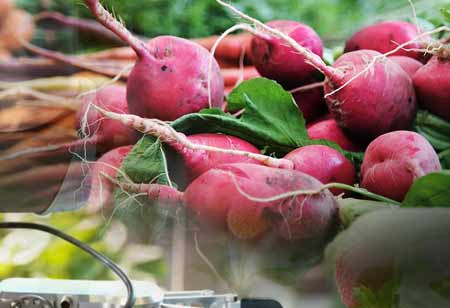Thank you for Subscribing to Food Business Review Weekly Brief
- Home
- Topics
- Alternative Proteins and Plant Based Food
- Beer and Wine
- Canned Beverages
- Coffee And Tea
- Food and Beverage Consulting
- Food and Beverage Financial Service
- Food And Beverages Marketing
- Food Distributors
- Food Ingredients
- Food Sustainability
- Plant Based Food and Beverages
- Seafood Suppliers
- Supplement Manufacturing
- Wine Investment
- News
- Vendor Viewpoint
- CXO Insights
- Conferences
- Newsletter
- CXO Awards
-
Common Types of Automated Restaurant Ordering Solutions
Well-served customers are often happy. Restaurants shouldn't keep the guests waiting.

By
Food Business Review | Thursday, November 25, 2021
Stay ahead of the industry with exclusive feature stories on the top companies, expert insights and the latest news delivered straight to your inbox. Subscribe today.

Innovative online restaurant ordering solutions boost the restaurant's performance, lower staff turnover, lower labor costs, and introduce a technological touch that can generate a restaurant experience.
FREMONT, CA: Well-served customers are often happy. Restaurants shouldn't keep the guests waiting. Firms can offer without delays or errors by deploying online OrderingOrdering for restaurants. Here is more about the business process automation and how an online ordering system can support restaurants to boost performance, reduce staff turnover, lower labor costs, and introduce a technological touch to create a restaurant experience.
• Tablet Ordering
For a tablet ordering system to act, restaurants will require a mobile ordering app for iOS or Android created for the restaurant. If restaurants want to utilize different hardware devices in the same restaurant, they can create a cross-platform application. The user life with a tablet ordering system can guide customers to choose a table and see the menu. After that, they place an order, customize it if required, and pay the bill. Along with an ordering system for restaurants, the bill is digital. But some restaurants also offer the option of receiving a paper bill.
• Mobile and Website Ordering
Restaurants can smoothly add the ability to place and pay for orders on the restaurant's existing website or via a mobile app. When ordering online, customers feel no hassle, which moves them to order more. Finally, the customer experience is enhanced, and the average order size increases. Therefore, when restaurants consider developing an online food ordering website or mobile app, they must include features like real-time menu updates, customer profiles, advanced orders, and table reservations.
• Self-Order Kiosks
A self-service kiosk works seamlessly. A restaurant ordering application is integrated into a cloud server with the menu in a database and handles customers' demands. An API enables the restaurant ordering app.
To communicate with the server. When customers leverage a self-service kiosk, the user journey looks like most restaurants. First, the kiosk allows customers to choose their language. Then it asks whether they are dining in or ordering to-go and sends them to the menu. In addition, self-service food ordering kiosks permit customers to order and pay by cash-free methods.






